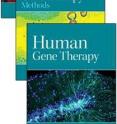New techniques improve specificity of CRISPR/Cas9 genome editing tools
To overcome the off-target mutations that commonly occur with CRISPR/Cas9 genome editing methods, researchers at Harvard Medical School and Massachusetts General Hospital have developed two strategies that greatly improve the specificity of RNA-guided nucleases for the DNA region targeted to be cut and repaired. A description of these new techniques and their successful use to modify human cancer cells and embryonic stem cells is described in a special issue on genome editing in Human Gene Therapy, a peer-reviewed journal from Mary Ann Liebert, Inc., publishers. The article is available free on the Human Gene Therapy website until October 15, 2015. In the special issue led by Guest Editor Feng Zhang, PhD, Broad Institute of MIT and Harvard, and McGovern Institute for Brain Research, MIT (Cambridge, MA), ?Nicolas Wyvekens, Ved Topkar, Cyd Khayter, J. Keith Joung, and Shengdar Tsai present their work in the article "Dimeric CRISPR RNA-Guided FokI-dCas9 Nucleases Directed by Truncated gRNAs for Highly Specific Genome Editing 9." They introduce two new strategies to reduce the off-target effects of current CRISPR genome editing methods: the use of truncated guide RNA molecules (gRNAs), creating shorter binding sites between the gRNAs and targeted DNA regions; and the addition of a FokI domain to the Cas9 protein, resulting in the formation of a nuclease dimer instead of monomer (the RNA-guided FokI-dCas9 Nuclease, or RFN).
Source: Mary Ann Liebert, Inc./Genetic Engineering News
Articles on the same topic
- Simple technology makes CRISPR gene editing cheaperThu, 23 Jul 2015, 16:37:01 UTC
- CRISPR-based genome editing technologies poised to revolutionize medicine and industryMon, 20 Jul 2015, 18:03:00 UTC
- New resource makes gene editing technology even more user-friendlyFri, 17 Jul 2015, 17:06:30 UTC
- Presidents of National Academy of Medicine and National Academy of Sciences Present new initiative on ethics of human gene editing technologyThu, 16 Jul 2015, 17:05:24 UTC
- New resource makes gene-editing technology even more user friendlyThu, 16 Jul 2015, 14:37:30 UTC
- Troubleshooting the gene targeting processThu, 16 Jul 2015, 14:37:19 UTC
Other sources
- Simple technology makes CRISPR gene editing cheaperfrom Biology News NetThu, 23 Jul 2015, 23:10:04 UTC
- Simple technology makes CRISPR gene editing cheaperfrom Science DailyThu, 23 Jul 2015, 18:30:37 UTC
- Simple technology makes CRISPR gene editing cheaperfrom PhysorgThu, 23 Jul 2015, 17:30:54 UTC
- New techniques improve specificity of CRISPR/Cas9 genome editing toolsfrom PhysorgMon, 20 Jul 2015, 18:00:21 UTC
- CRISPR-based genome editing technologies poised to revolutionize medicine and industryfrom PhysorgMon, 20 Jul 2015, 18:00:19 UTC
- New resource makes gene-editing technology even more user friendlyfrom Biology News NetThu, 16 Jul 2015, 23:30:15 UTC
- New resource makes gene-editing technology even more user-friendlyfrom Science DailyThu, 16 Jul 2015, 14:30:46 UTC
- Troubleshooting the gene targeting processfrom Science DailyMon, 13 Jul 2015, 16:10:15 UTC
- Predictive software can precisely identify most effective ways to target genes with gene editing mechanism CRISPR-Cas9from PhysorgMon, 13 Jul 2015, 15:30:18 UTC
